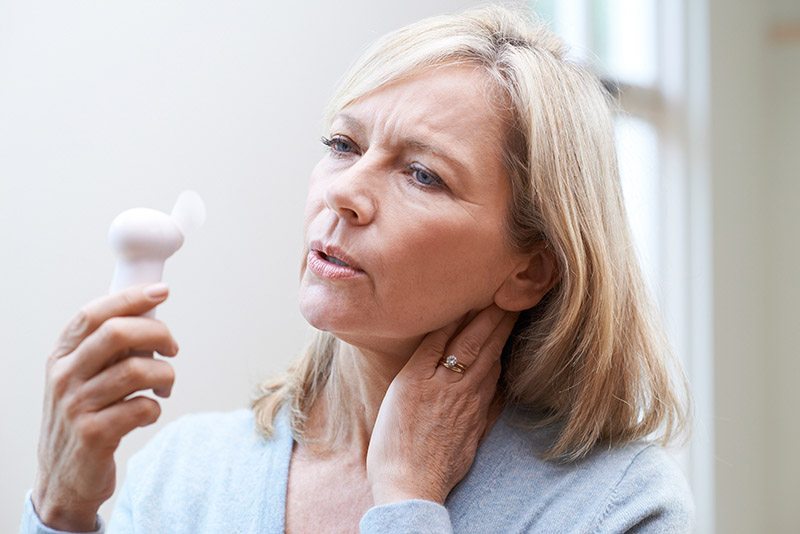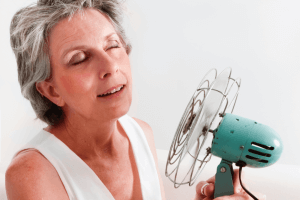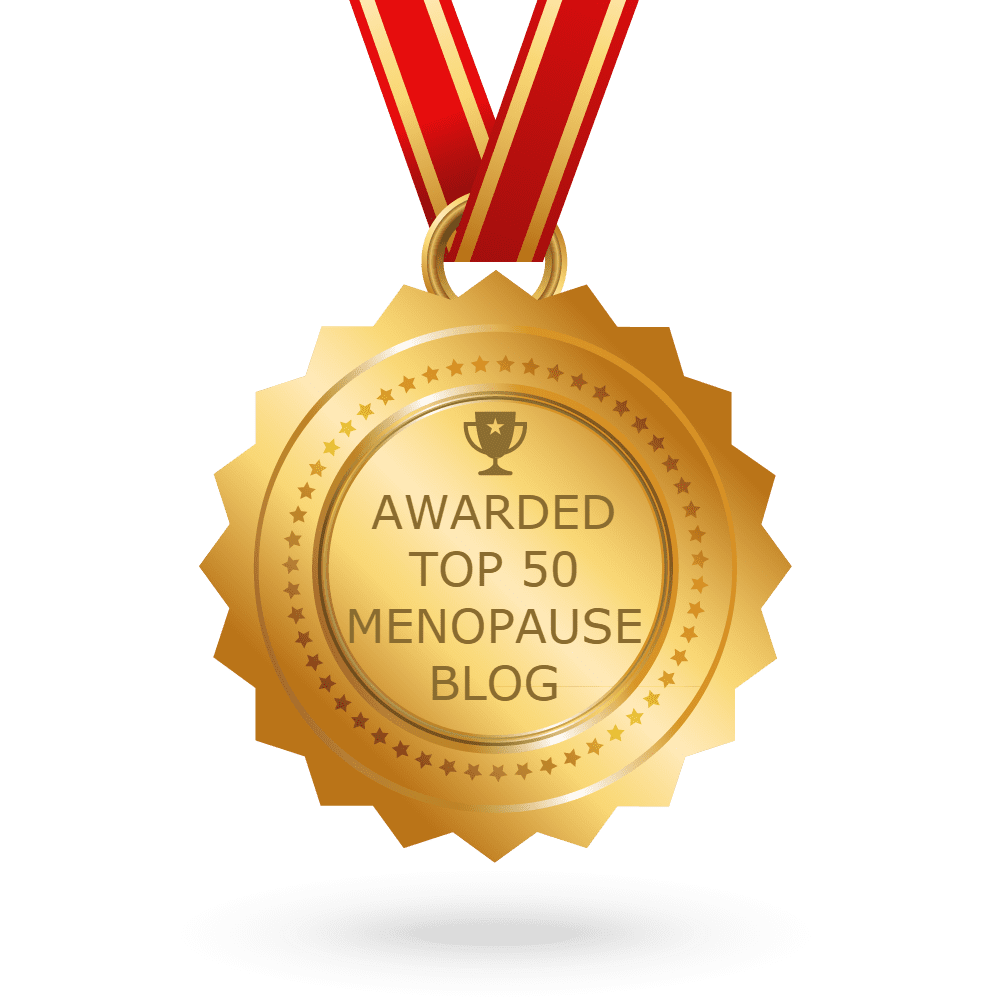Body temperature fluctuations? Hot flushes? Today it’s all about them, one of the peskiest signs of menopause. Biochemist Peter Lehrke talks us through the science of hot flushes.
Hot flushes are worth knowing a bit about because they last for several years.
Arrgh! What’s happening to our body?
Let’s talk about what is actually happening throughout your body when you experience a hot flush during menopause. Indeed, this begins in your own Middle Earth; the earth shaped organs deep within you – the ovaries.
Ovaries
Once upon a time, before you were perimenopausal, your ovaries produced large quantities of estrogen and progesterone. As you age the ovaries begin to reduce a number of the hormones they produce. As a result, the entire ecosystem of your internal universe is affected.
Brain
Declining estrogen confuses the brain. In particular, the hypothalamus, the area responsible for producing hormones that control hunger, mood, and body temperature. A sudden drop in estrogen spurs it to tell the body you are too hot. Even when you are not even feeling warm.
Heart
In response to the overheating alert from the hypothalamus, the brain triggers the nervous system alarms. This sends stress and mood hormones shooting through your system (adrenalin, noradrenalin, prostaglandin, serotonin). And the body turns on the cooling mechanisms in the skin, heart and sweat glands.
Mood
You may feel tension or dread before a hot flush. You may even experience an aura, visual signs like dark spots or flashing lights. This is caused by changes in the cortex area of the brain where we experience sensations.
Skin
Your skin temperature can rise 50 to 70C. And it will feel like a massive surge of heat. However, your internal organs and your core body will remain constant and normal temperature.
Blood vessels
The heart begins to beat faster to increase blood flow in order to get the blood vessels to dilate. This helps get rid of heat from the skin. It also diminishes the signature, attention-getting hot-flash look – a flushed face and upper body.
Sweat glands
To cool the body down the sweat glands release sweat, which then evaporates. This lowers the temperature and cools you off. Then you may actually feel cold.
All of this happens in a flash, leaving you rather flushed!

Why do hot flushes happen?
We know what happens, but medical science doesn’t yet know the full reasons why. The jury’s out on why hot flushes occur in most women, yet not all. However, we do know that certain non-menopausal factors can make these signs worse. These include:
Certain medications.
Opioids, antidepressants, and some osteoporosis drugs are a few of the common medication triggers.
Medical conditions.
Thyroid issues, infections or viruses will increase body temperature, often in waves.
Excess weight.
Body fat is metabolically active, which helps explain the links between obesity and some cancers. A University of California study showed losing weight and exercising reduces hot flushes.
Food allergies or sensitivities.
Alcohol, caffeine and additives like sulphites are common triggers. Certain foods, especially spicy foods can also set off the cascade of hormones that result in body heat.
Anxiety.
In fact, any stress that results in adrenalin and cortisol release can turn up the body’s thermostat.
A hot bedroom.
Body temperature naturally fluctuates throughout sleep. It’s common for both women and men to wake up in the middle of the night feeling overheated or sweaty.
What Can You Do?
Check the side effects of any medications
you are taking. Discuss these and any medical conditions with your healthcare professional. There may be alternatives with less severe side effects.
Watch your weight
Keep a diary
and record foods you’ve eaten that could be making flushes worse. Consider cutting down/out alcohol and caffeine and look for food additives on labels of the foods you eat.
De-stress
and monitor your stress and anxiety levels in your diary. See if there is any pattern of association with your hot flush signs. If you do feel anxious remind yourself to breathe through any tense or uncomfortable moments. Exercise, yoga and meditation all help to reduce anxiety.
At night
ensure your sleepwear and bedding are appropriately light and crack open a window for more fresh air circulation.
Finally, remember body temperature surges are a transient phenomena and at MenoMe® we are here to help you through it.
By Peter Lehrke
Nutritional Biochemist.
Want extra some extra support? Grab our FREE e-guide sharing 3 simple insights to help you support your body during your menopause.











